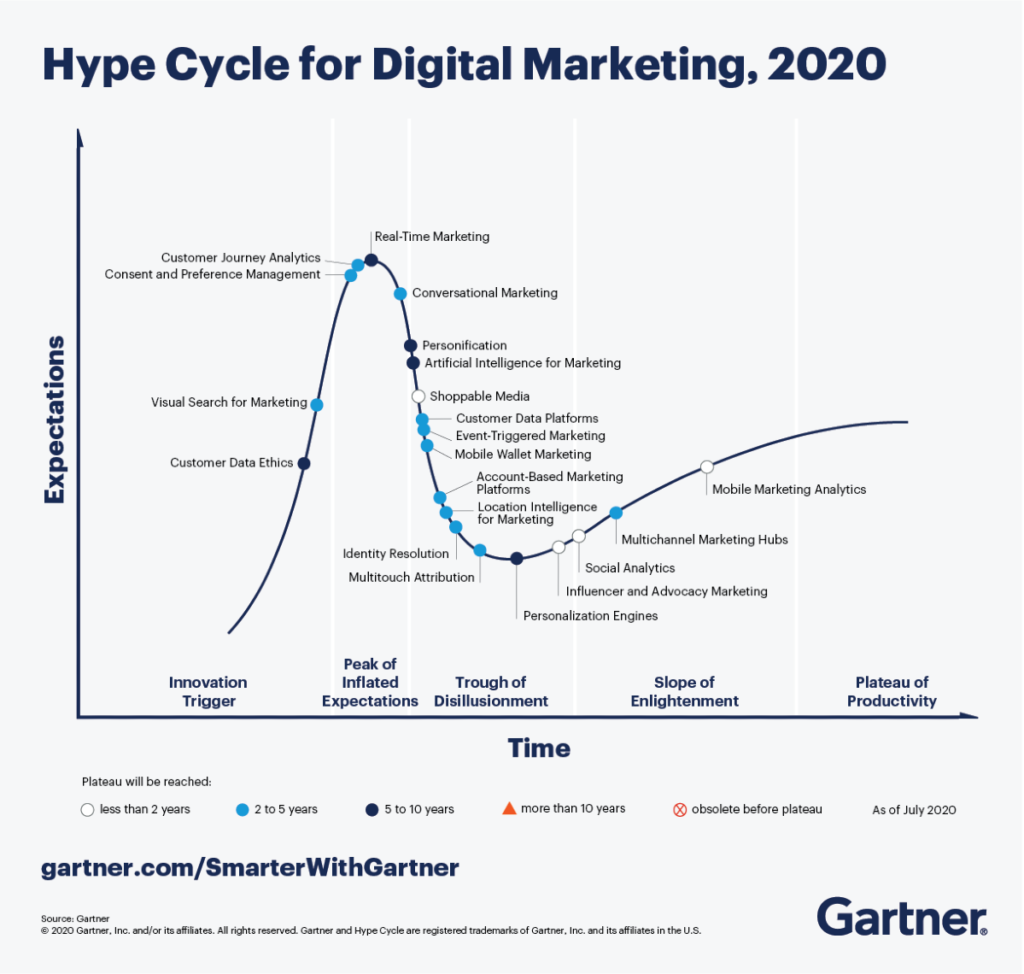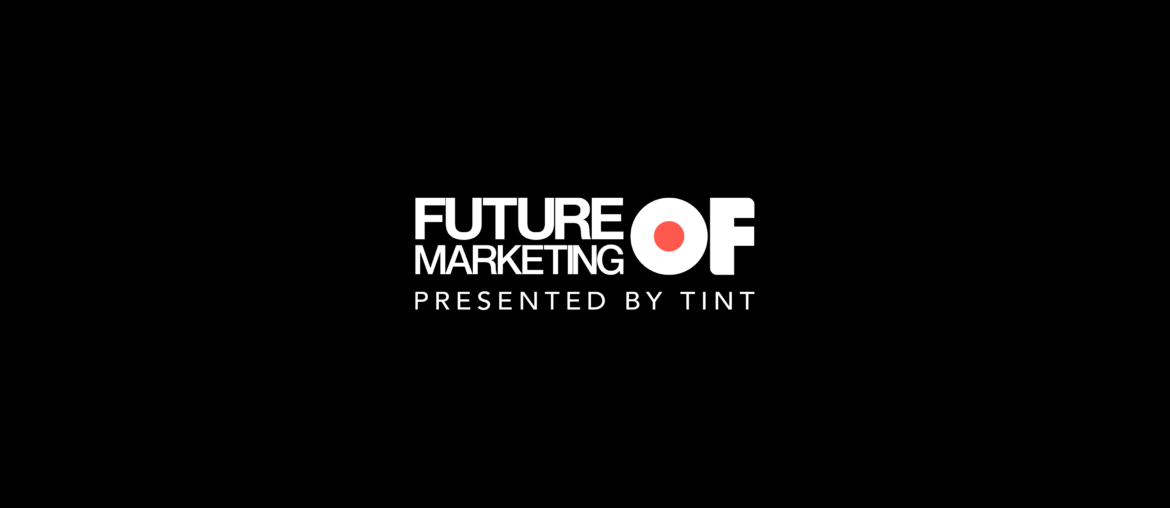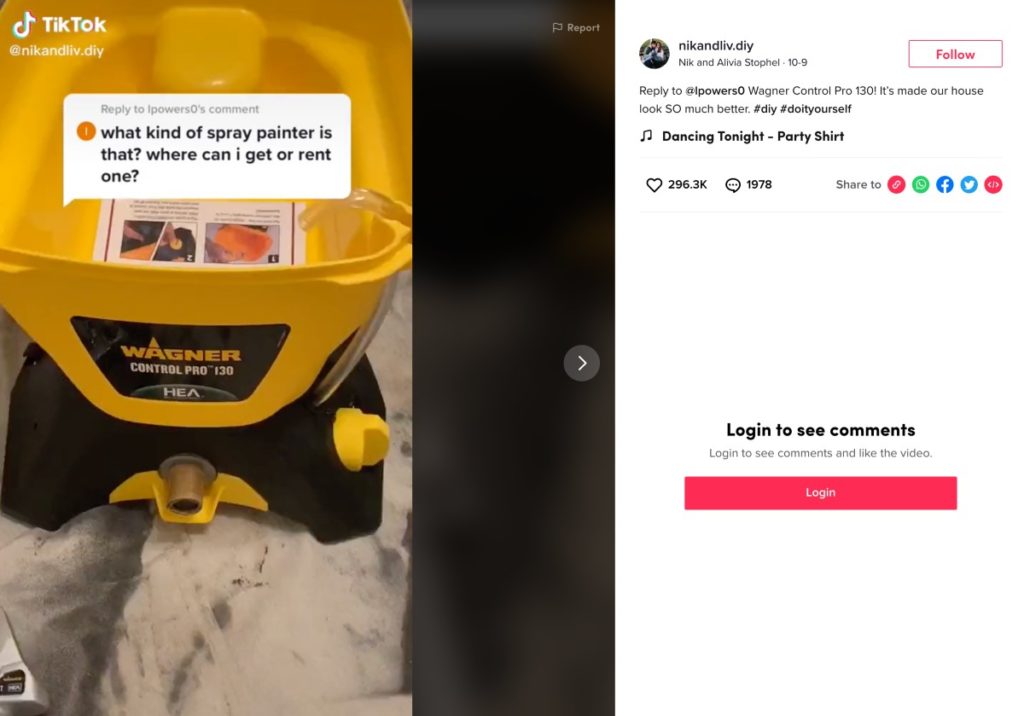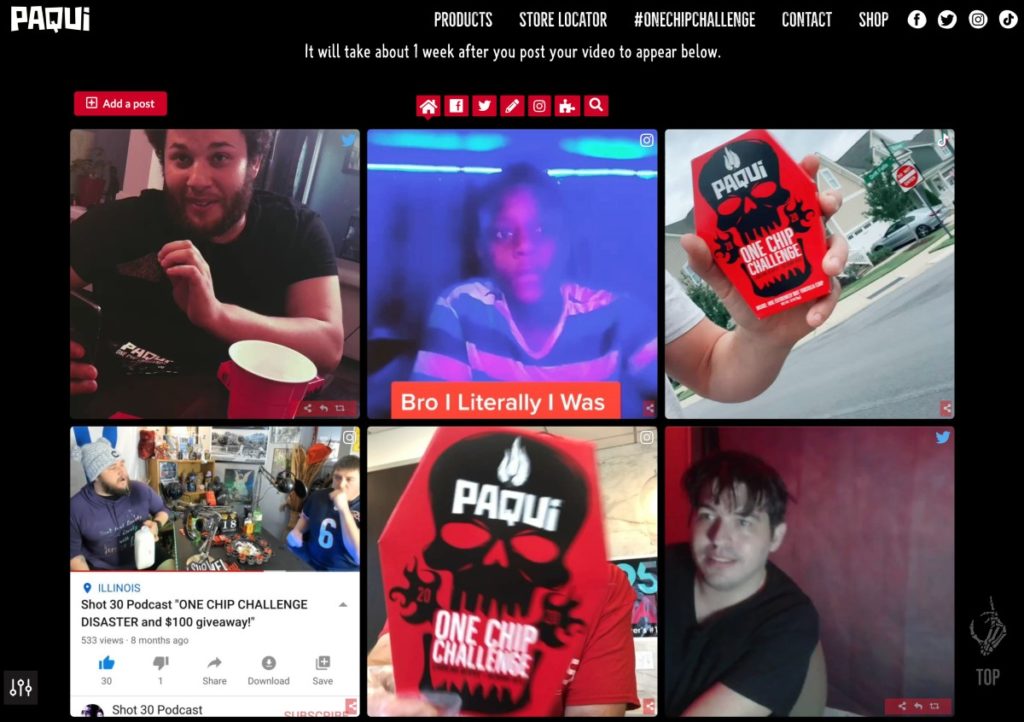This content originally appeared October 22, 2020 as part of the Future of Marketing weekly email series. Subscribe here.
Branded content, alone, is not enough to cut through in the attention (deficit) economy.
Fictional stories in marketing became oversaturated and unrealistic — where people no longer want to see models faking an experience with a brand, but want to see real customers talking about their experiences.
But as marketing becomes more authentic, new data will emerge and drive the industry towards more hyper-personalized and social experiences.
Happy Customers = Best Influencers
The best influencers are those who buy and talk about your brand without requiring incentives. They create content about your product or service because they enjoy it and want to share those positive experiences with their friends and followers.
Take this TikTok video of Nik and Alivia Stophel responding to a follower’s question about the tools they use to paint and renovate homes, for example.
Over 296k views. 37k shares. 2k comments.
Brand mentions. Real testimonials. No expectations.
“The influencers who are going to win are those who are experts in their field, and who have built credibility with their audience,” shared Ashanti Akabusi, brand and digital strategist.
The future of marketing is about using UGC to deepen the connection and conversation with ideal buyers – taking the brand-influencer relationship beyond free cake for testimonials.
“This isn’t to disparage influencers, but to point out that there are many types,” shared Matt Greener, VPM of TINT. “Everyone’s an influencer to a certain degree and the best influencers are customers who love and talk about your brand for real and without expectation.”
Now, influencers have to disclose partnerships to highlight the authenticity of their testimonials, which will further distinguish honest experiences from promoted ads.
Ethics and customer data
Understanding data means identifying who is talking about you, how people are finding your brand, what customers are purchasing (or not), what keywords people are searching for, the content people are engaging with the most – and so on.
According to Hootsuite’s Digital 2020 Report, nearly half of the world’s population (❗️3.8 BILLION people❗) now uses social media – which means more businesses will invest in data and more people will want to know how their information is being used.
“Over the next five to 10 years, we’ll see demand for the ethical treatment of customer data intensify as consumer trust decreases,” shared Mike McGuire, VP Analyst at Gartner.

This doesn’t mean you shouldn’t collect data and avoid advanced tools –quite the opposite.
Use data for good… to build trust, create better content, and improve the experience people have with your brand. Your customers, prospects, fans, employees.
But remember that investing in customer data starts with compliance, brand transparency, and ensuring trust extends beyond your tagline.
What we’re learning…
- The hospitality industry is tapping into the subscription economy [CNBC]
- Mucinex to launch apparel line in Youtube Live Stream [AdWeek]
- The global social commerce market will surge about 34% by 2021 [The Drum]
- Consumers spent a record $28 BILLION on apps in Q3 2020 [TechCrunch]
“No matter what innovations are in our future,
Brianne Fleming, Professor at the University of Florida and Podcast Host
we will always be marketing to people.”
[Future of Marketing]
#brandcrush: Paqui
Each week in #brandcrush we highlight exceptional brands that are channeling their customers’ voice to connect more authentically with their audience.
Fun fact: The Carolina Reaper (still) carries the crown for the spiciest chili pepper in the world by Guinness World Records.
Paqui engineered a social experience and challenge culture around one *very spicy* $7 chip – where even people who don’t normally eat spicy food dare to try the #OneChipChallenge.
In fact, our team would host an in-office #OneChipChallenge – where we’d shut the company down for half a day, nominate some brave souls, and crown a winner. It even became a bit of a tradition.
But Paqui takes the social experience full-circle on this landing page – starting with a UGC-focused promo video.
Paqui also implemented daring messaging, captivating packaging, and shoppable merchandise (like t-shirts and party packs), elevating every touchpoint to boost word-of-mouth and generate sales.
As you continue scrolling through Paqui’s landing page, you’ll notice its Wall of Infamy – a TINT-powered social wall daring people to eat the chip and submit their agonizing reactions.
A strategic way to use social proof to influence people to participate.
In essence, Paqui built an entire social movement around the #OneChipChallenge – and it works because of UGC.
And if you think about it… they technically generate more money from one chip than a bag of chips.
Genius.
PS. Our partner and social leader Hootsuite teamed up with research and advisory firm Altimeter to publish The Social Transformation Report – an insightful analysis detailing how mature organizations are investing in social media to build trust and evolve beyond social listening and publishing content.
It’s a recommended read, which you can access here.




